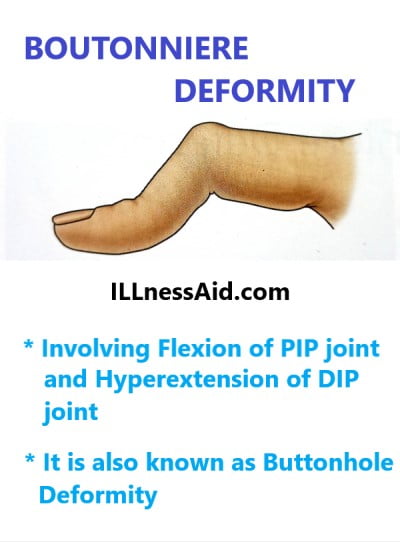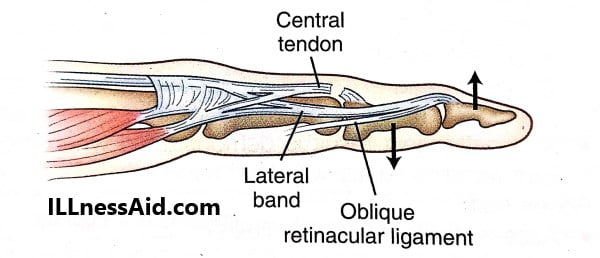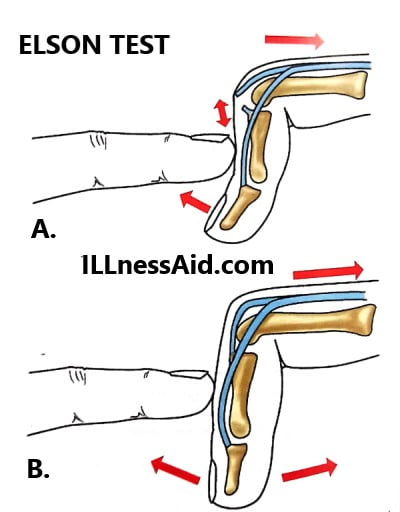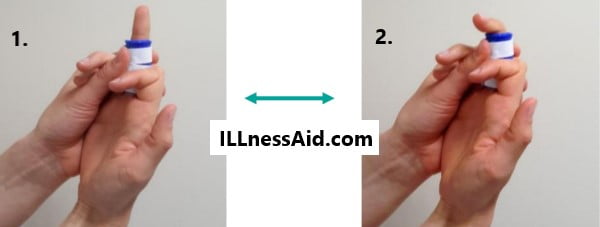Boutonniere deformity involves flexion of the PIP(proximal interphalangeal) joint and hyperextension of the DIP(distal interphalangeal) joint. “It is also known as Buttonhole deformity”. This deformity is due to the attenuation or disruption of the central slip and triangular ligament of the extensor expansion on the dorsal side of the finger. In this deformity, the balance of the finger extensor change, leading to fixed volar subluxation(lateral band) and focus of extension force on the distal joint.
ICD-10-CM CODES
- M20.021 – BOUTONNIERE DEFORMITY OF RIGHT FINGER(S)
- M20.022 – FOR THE LEFT FINGER(S) OF THIS DEFORMITY
- M20.029– BOUTONNIERE DEFORMITY OF UNSPECIFIED FINGER(S)

There can be many types of history that lead to Boutonniere deformity like:
- Open Injury
- Force flexion of an actively extended PIP joint
- Closed Injury
- Crush Injury
- Burns
- Infection
- Inflammatory
- Gout
- Rheumatoid and other arthritides
- Subcutaneous and can have many different histories

CLINICAL FEATURES OF BOUTONNIERE DEFORMITY
- The middle finger Joint is bent and you are not able to straighten it fully
- Localized tenderness Present
- PIP joint effusion
- Swelling and pain occur at the middle joint finger
- In radiographs, Fractures and volar subluxations are often seen
- Mainly loss of active PIP joint extension and hypertension of the DIP joint
PHYSICAL EXAMINATION TEST OF BOUTONNIERE DEFORMITY
1. ELSON TEST
- In this test, ask the patients to bend the PIP joint 90 degrees over the edge of a table
- And resist the middle phalanx/middle finger from the extension
- This test is positive when the DIP joint goes into the rigid extension( forces distributed to the tendon through lateral bands)
- A negative test result shows when DIP remains floppy with this resistance

2. BOYES TEST
- In this test, we assess the ability of flex DIP with PIP help in extension
- For doing this, Ask the patient to flex the DIP joint with the PIP extension
- If the patient is not able to flex the DIP joint then this test is positive
- This test may not be positive in acute or early setting
NOTE: DIFFERENTIAL DIAGNOSIS
A true boutonniere deformity should not confuse with a pseudo-boutonniere deformity. we can use both special tests for differentiation. In pseudo-boutonniere deformity:
- The Extensor mechanism will not affect
- Show flexion contracture of PIP joint then allowing DIP mobility
- Flexion contracture is due to scarring of the volar plate
TREATMENT WITH EXERCISES
Depending on the severity of the deformity of injury and the flexibility of digits treatments proceed. So go to the doctor first to check your condition. In this condition, A splint will have been given to you that you have to wear all the time for the next 8 weeks. You have to wear a splint at night and at times of risk for 2-4 weeks. This splint helps you to straighten your finger. And also if you have swollen fingers and hands then keep them in the air as much as possible. During wearing a splint you should do these exercises every hour :

- Hold the splinted joint to keep it straight.
- Slowly bend and straighten the joint(end) as shown in the picture.
- Do this 30 times.

- Keep the fingers straight.
- Slowly bend and straighten the first knuckle as shown in the figure.
- Do this 10-20 times.
- Do these exercises every hour
- Do not remove your splint until your therapist advises you.
- Make sure your other fingers are not stiff during exercise
- Regularly check your skin condition around the splint
- Make sure your splint is fit and comfortable
NOTE: After 8+ weeks you will be advised to remove the splint with gentle exercises. It will help you regain movement. You should contact your therapist if you face any problems regarding this.
TAKING ADVICE FROM THERAPIST NEVER CAUSE A PROBLEM
ILLnessAid
Thank you for reading this far, today we talk about boutonniere deformity and its exercise, examination test, and more. If you have any problem regarding this then you contact us or can comment below.

